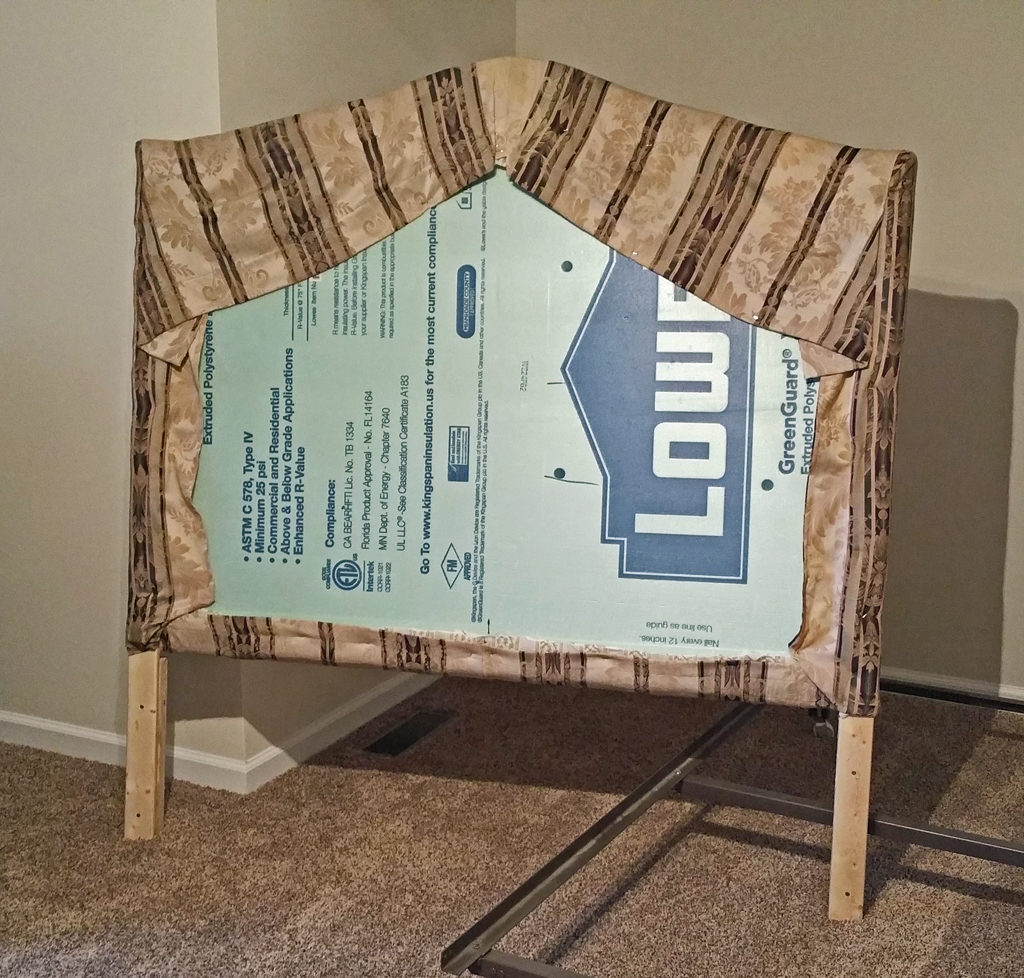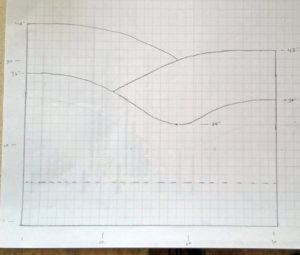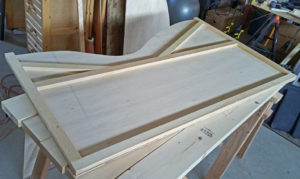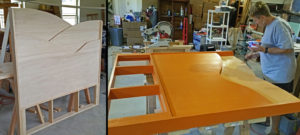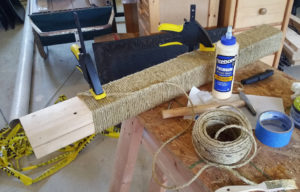So after quite a bit of drilling, screwing, sanding, gluing, bashing, sanding, clamping, sanding, painting, staining… and sanding, the dining room table is done!
For you “tl;dr” folks, here’s the completed table in its natural habitat…

For the rest of you, here are some of the “along the way” details.
I had posted a picture of the base in my first table update. I ended up using that as my work table to do my table top glue-up. I covered it with plastic and put some boards across the top for my pipe clamps. The table top is made of seven 12-foot 2×6’s from Lowe’s.
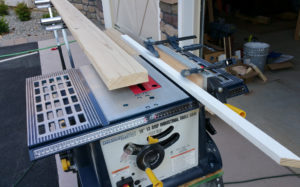
Harbor Freight table saw with make-shift rip fence extension
In order to get nice square edges to glue, I had to rip about 1/4″ off each edge using my little table saw from Harbor Freight. I rigged up a jig to make my rip fence longer since I was pushing 12-foot boards through it. That ended up working fairly well and I was impressed (surprised?) at how well the saw kept up.
The edges weren’t quite perfect, but they were close enough (*cough*) and since it was pine, I figured I’d clamp it tight enough to squish everything together (that turned out to be mostly true).
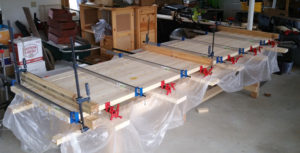
So many clamps!
I clamped the first two boards together and kept going, one board at a time. Since it was my first glue-up of this size and I didn’t think I could apply the glue, get multiple boards in place, align them, attach my clamping cauls, and tighten up all my clamps before the glue dried out too much. I waited about an hour and a half (or more) between boards to give the glue enough time to set before I started moving things around to add another board. The final clamping (shown in the picture), I left alone for a little more than 12 hours.
There was a lot of excess glue on top. That took a lot of scraping to remove after it dried… followed by a lot of sanding to get everything level (because all the scraping took off some wood, too). But I got it all removed (Make a mental note of this bold claim. It’ll come up later) and sanded it to a nice finish using 80-grit, 120-grit, and 220-grit sandpaper. I also routed a 1/2″ round-over edge all around the table top.
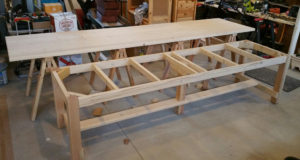
Table top and base… ready for finishing!
I arrived at this point where everything was ready for finishing! I had planned on finishing it myself, but I only get to work on this sort of thing about an hour or so a day (if that) and on weekends, so Lori offered to do it for me. She’s been doing a lot of painting and refinishing lately, so I figured she was in the zone and I’d go ahead and let her do the finishing work on the table. I’m really considerate that way (wait, what?!).
The base was to be painted white and the top was getting a dark stain to go with our kitchen and living room woodwork. After the first coat of stain, the top looked fantastic. It really brought out the nice grain and was the perfect shade of rich brown. Lori did a second coat of stain and suddenly (remember that mental note you made about my claim of having removed all the glue?) every… little… spot… where glue had touched the wood showed up like a fluorescent beacon, as if the wood and the glue were conspiring to make a mockery of me and my vain attempt at glue removal.
But… thanks to my friend Darren (I can call him that. I paid him) who had loaned me his belt sander, it only took an hour or so for me to sand the table back down to the bare wood (or close enough) for another go at staining… with only a single coat this time. The results were perfect again after one coat, so Lori and I agreed that one coat was what we’d both meant to do in the first place, anyway (She was also nice enough to not call me out for my lack of glue-removal skillz).
So the table top was stained. The base was painted white. We moved it into the dining room and Voila! Of course now Lori couldn’t reach the salt, but what are you gonna do?
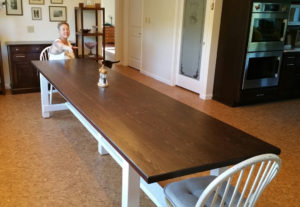
After having it in the dining room for a few days, she said (and I agreed) that it was a little too “farmhouse style” for what we wanted. She suggested that painting the base black might dress it up a bit. So we (and by “we” I mean “she”) repainted the base a nice satin black, which created exactly what we were looking for.
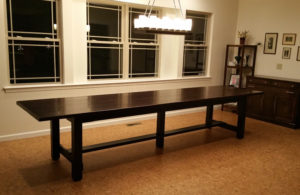

The table is 11-feet, 11-inches long (that was done on purpose) and weighs roughly ten bazillion pounds (that was not done on purpose). The top was finished with seven or eight coats of Minwax satin polyurethane. We should be able to easily seat twelve people… fourteen if people want to get a little squishy.
We’re missing chairs… but that’s another adventure!
Hat tip to the following sites for design and construction inspiration:




